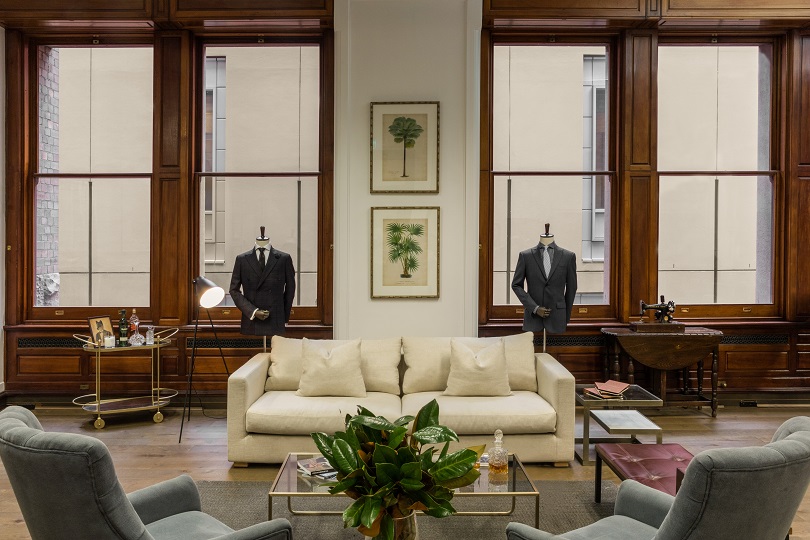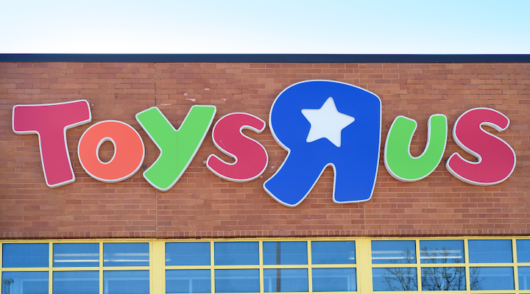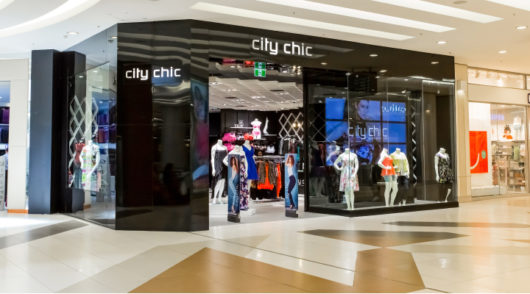 Opening the doors to their Adelaide showroom two weeks ago, James Wakefield and Robin McGowan, co-founders of custom menswear business Institchu, were confident that the store, their seventh in Australia, would be a success.
Opening the doors to their Adelaide showroom two weeks ago, James Wakefield and Robin McGowan, co-founders of custom menswear business Institchu, were confident that the store, their seventh in Australia, would be a success.
For starters, they had only expanded to Adelaide after noticing an increase in the number of orders coming out of the City of Churches and testing customer demand through pop-ups. They had also selected a 160sqm location that, while in the heart of the CBD, was not in a traditional retail precinct, saving on rent.
And like all Institchu showrooms, they had designed the space to lean more lounge room than department store, meaning they only needed to buy some pieces of good-looking furniture, rather than a full fit-out. The fact that their business model – made-to-measure suits – was light on inventory also helped keep overhead costs down.
A data-driven approach
Since launching online in 2011, InStitchu has opened nine showrooms across Australia, New Zealand and the US and says it has achieved 114 per cent growth each year. Wakefield credits much of the company’s omnichannel success – not necessarily a given when you consider how many bricks-and-mortar retailers are closing up shop today – to its strategic approach to expansion.
“All of our showrooms are data-driven. We don’t just say, ‘Let’s open a showroom in Adelaide.’ We look at the online data. We test it with pop-up stores,” Wakefield (pictured above, left, with McGowan, right) told Inside Retail. “The customer feedback was that we had to be there.”
The business is on track to open at least three more showrooms in the next 12 months, including one in Perth, a second location in Melbourne and a second location in the US, following the same blueprint.
Besides the positive results the company has seen internally – Wakefield says each new showroom has led to an immediate increase in that region’s online and offline sales – the approach has attracted the interest of investors looking to get in on the ground floor of the digital-first retailer.
Private equity firm, Aura, was one of the first to invest in Institchu, leading a $2 million funding round back in 2014. After raising other “small amounts of capital” over the years, Institchu in March announced that Chinese suit manufacturer Dayang Group was acquiring a 13 per cent stake in the business for $3 million, giving the online retailer a $20 million valuation.
“Digital-first businesses can adapt to changes in consumer demand instantly,” Wakefield says, explaining Institchu’s appeal to investors.
“If you look at a normal suit brand, they have to order their collection 12 months in advance of it going on sale in a store. We’re constantly analysing data, and if we see a sudden increase in wide-peaked laps, we can immediately launch a collection around that.”

The digital retail bubble
If you’re a tech startup in fashion, beauty, food or another traditional retail sector, it has seemingly become easier than ever to raise millions of dollars in private equity and venture capital funds. At the same time, however, there are a growing number of cautionary tales of once heralded businesses that have had their valuations slashed – think Birchbox, NastyGal and, locally, Mon Purse – after failing to translate scale into profitability.
Wakefield says the problem lies in an investment model that prioritises top-line growth above all else, an approach that he and McGowan have deliberately avoided.
“What Institchu has done is raise small amounts of capital at incremental valuations as we need them,” he says, adding that in the US, “you see brands raise $20 or $30 million … and spending, spending, spending and worrying about profit later.
“We don’t see a need for that. We’ve always worked towards controlled, manageable growth … If you’re having to spend heaps of money to acquire customers, that’s already a sign that what you’re doing needs improving. You want to acquire customers organically through repeat orders and being the best at what you do.”
Made-to-measure suits in three days
Wakefield notes that Institchu didn’t need Dayang’s recent investment for funding, but rather it formed the basis for a strategic partnership. The retailer is working closely with the Chinese manufacturer to improve the quality and construction of its made-to-measure suits and reduce production time.
Institchu currently delivers suits within three weeks, which Wakefield says is at the forefront of the industry, but wants to reduce that time-frame to seven days.
“Our goal in the next two years is to reduce production down to three days and, when we factor in things like shipping, to deliver a made-to-measure suit anywhere in the world within seven days,” he says.
Wakefield believes that only then will made-to-measure suits become a true alternative to buying off-the-rack for consumers, and mass customisation businesses like Institchu will become mainstream retailers.
“Now, people go to a department store and buy a suit and have it altered because they want it as quickly as possible. If we can offer a made-to-measure suit in the same time-frame, why would anyone buy a suit off the rack?”
According to Wakefield, Dayang is building new purpose-built factories for made-to-measure suit manufacturing, which will take advantage of new technology, machinery and more efficient processes to shave days off the current production times.
And while he acknowledges that Institchu’s competitors are likely to benefit from any changes Dayang makes to its facilities – as the world’s largest suit manufacturer, Dayang also fills orders for the US made-to-measure suit leader, Indochino – Wakefield says he isn’t concerned about that.
“What we’re doing is creating awareness of affordable made-to-measure menswear. We want to get people away from shopping at department stores, and yes, our ‘competitors’ will benefit from these improvements too, but we see it as a positive thing for the industry as a whole.”






